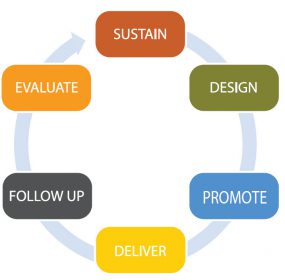Error processing SSI file
CDC Professional Development Practices
The ultimate goal of professional development (PD) is the effective implementation of skills and strategies that enhance knowledge and transfer of learning. The CDC Professional Development Practices listed here are based on research and best practice and provide the best conditions for implementation to occur. They encompass the delivery of PD in a group setting (trainings, presentations, meetings) and one‐on‐one (general technical assistance, coaching/mentoring).
For more details on the specific types of PD and how they should be developed and implemented, refer to the e-learning course, Professional Development 101.

Developed by the Centers for Disease Control and Prevention’s School Health Branch, in partnership with RMC Health.
Error processing SSI file
Page last reviewed: March 13, 2019
Content source: Error processing SSI file